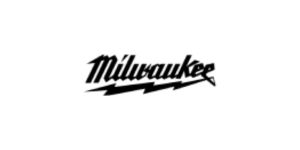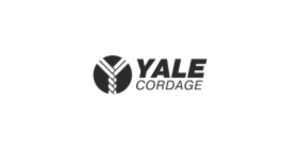At Maine Treekeepers LLC, we believe in thoughtful, responsible pruning that helps trees thrive while maintaining a safety and aesthetic value. While trees grow naturally in places like forests, they often shed dead or weak branches on their own. Landscape trees usually require occasional pruning to maintain health, structure, and safety. Done correctly, pruning improves a tree’s appearance, structure, and longevity- but improper pruning can lead to lasting damage.
Here’s what every homeowner should know about why, when, and how to prune their trees. Why Prune?
There are several good reasons to prune your trees:
- Remove dead, diseased, or damaged branches.
- Eliminate crowded, rubbing or crossing limbs.
- Improve safety around buildings, driveways, and walkways.
- Reduce wind resistance.
- Increase light and air penetration to the inside of the crown and the landscape below
Additionally, pruning can help reduce storm damage and improve the overall structural integrity of the tree.
When to Prune
The timing of pruning can have a significant impact on your tree health, growth and resilience. While some types of pruning- like removing dead, damaged, or hazardous branches- can be done any time of year, most other pruning tasks are best scheduled based on the tree’s biology and seasonal conditions.
- Fruit trees are best pruned in the winter while dormant. Waiting to do so with promote strong scaffold branches and optimize fruit production.
- Most trees respond best when pruned just before the spring growth flush, as this encourages faster wound closure. However dead, diseased, broken or hazardous limbs can be removed anytime. As leaving them increases the risk of property damage, personal injury, and the spread of decay or pests.
- Storm Damaged Trees: Should be pruned immediately to remove hazards and prevent further damage, regardless of the season.
- Diseased Trees: Avoid pruning when fungal or bacterial diseases are active, especially during wet seasons when pathogens are easily spread throughout fresh wounds. • Late spring to summer is suitable for corrective pruning, removal of water sprouts, and clearing of hazardous branches. Pruning after leaves have fully expanded allows you to judge the canopy density and shading which can be beneficial for figuring out exactly what to trim. Avoid heavy pruning during active growth periods as it can stress out the tree.
NOTE: Some species such as Maples, Elms and Birches may “bleed” sap if pruned in early spring. This may be unsightly but is typically harmless.
Types of Pruning Cuts
Heading Cuts: A heading cut removes a branch or shoot back to a stub, bud, or lateral branch that’s too small to take over the terminal role. These cuts stimulate dense new growth just below the cut and can drastically alter a tree’s natural form. Typically used in nursery production, hedge or shrub maintenance. Rarely used in arboricultural work for mature trees because they lead to weak, poorly attached sprouts and disrupt natural growth patterns.
 Three-Cut Method for Large Limb: To safely remove large or heavy limbs without tearing the bark:
Three-Cut Method for Large Limb: To safely remove large or heavy limbs without tearing the bark:
- Make an undercut 1- 2 feet from the trunk. A properly made undercut will eliminate the branch “peeling,” or tearing bark as it is removed.
- Make a top cut slightly beyond the undercut to drop the weight smoothly.
- Finish with a final “collar cut” just outside the branch collar to remove the stub cleanly. (This prevents bark tearing and allows the tree to naturally compartmentalize the wound).
Reduction Cuts: A reduction cut shortens a branch by cutting it back to a lateral branch large enough to take over as the new leader. As a rule, the lateral should be at least 1/3 the diameter of the branch being removed. The purpose generally is to reduce crown size, provide clearance around structures or utility lines, or maintain the trees natural form while reducing risk.
Snap cut: A snap cut is a type of pruning cut used when removing medium to large branches similar to the three-cut method, it involves making a partial undercut followed by a top cut a few inches further out. As the top cut approaches the undercut the branch will snap under its own weight before the cut is fully complete. This technique helps prevent bark stripping and damage to the remaining trunk or apparent limb.
Tools for the Job
Using the right tools makes a difference:
 Hand pruners: These are best when doing your fine pruning, generally used for small branches under ½ inch. Bypass style pruners (scissor- type) are preferred for cleaner and more accurate cuts. These are preferred over the anvil type seen in the image to the right.
Hand pruners: These are best when doing your fine pruning, generally used for small branches under ½ inch. Bypass style pruners (scissor- type) are preferred for cleaner and more accurate cuts. These are preferred over the anvil type seen in the image to the right.
Lopping Shears: Commonly referred to as loppers, are essential tools for
pruning small to medium sized branches- typically between ½ inch and two inch in diameter. They consist of two long handles and a cutting head similar to that of the bypass pruner (mentioned above) but with more leverage. The longer handles allow for a greater cutting force and access to slightly higher or deeper limbs within the canopy.
Pruning Saws: Specifically designed for tree work, these saws typically have an arched blade and cut on the back (pull) stroke for greater control. They come in various sizes and tooth configurations for different branch diameters and wood densities.
Pole Pruners: Essentially a set of bypass loppers mounted on the end of a long, extendable pole. They operate with a rope and pulley mechanism to make clean cuts on branches up to two inches in diameter, high off the ground without climbing. Pole pruners are ideal for minor deadwood removal and thinning cuts at heights, but care must be taken to position the cutting head accurately for a clean, flush cut.
Pole Saw: A pruning saw mounted on the end of an extendable pole, used for cutting larger branches from the ground or while climbing. Pull saws can handle cuts typically up to 4-6 inches in diameter depending on the saw and wood type, however they require careful technique- especially since working overhead increases the risk of poor cuts or falling debris. Clean, accurate cuts are best made when the climber or user can properly position both the saw and themselves for control and safety.
Note: Pole tools allow you to work from the ground, but they have limitations in terms of control and visibility, and they increase the risk of jagged, improper cuts if not used correctly. When dealing with larger or strategically important limbs it is often better to have a trained climber or arborist handle the work.
 Wound Closure and Tree Health
Wound Closure and Tree Health
- Pruning just before the spring growth flush allows trees to seal wounds faster and limit decay.
- Avoid pruning during periods of drought, extreme heat, or severe cold as the trees defense mechanisms may be compromised.
- When branches break naturally in storms, or are improperly pruned it leaves jagged, splintered or torn stubs- creating an irregular wound that the tree struggles to seal. These damaged branches end up more than just unsightly; they become points of entry for decay, past, and disease.
- A major concern with these jagged or broken cuts is that they often create cup shaped stubs or pockets where water can collect.
Standing water in these cavities promotes fungal growth and accelerates the decay process inside the limb and surrounding trunk tissue. Overtime, this decay can spread deeper into the tree, weakening its structural integrity and making it more vulnerable to storm damage, breakage and even complete trunk failure. Always use proper pruning techniques to make clean cuts at the correct location, promoting quicker closures and reducing the risk of infection.
SAVING THE EARTH, ONE TREE AT A TIME.






